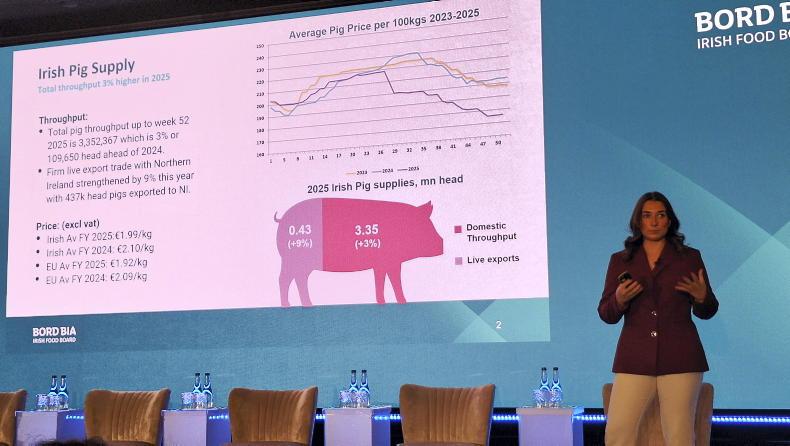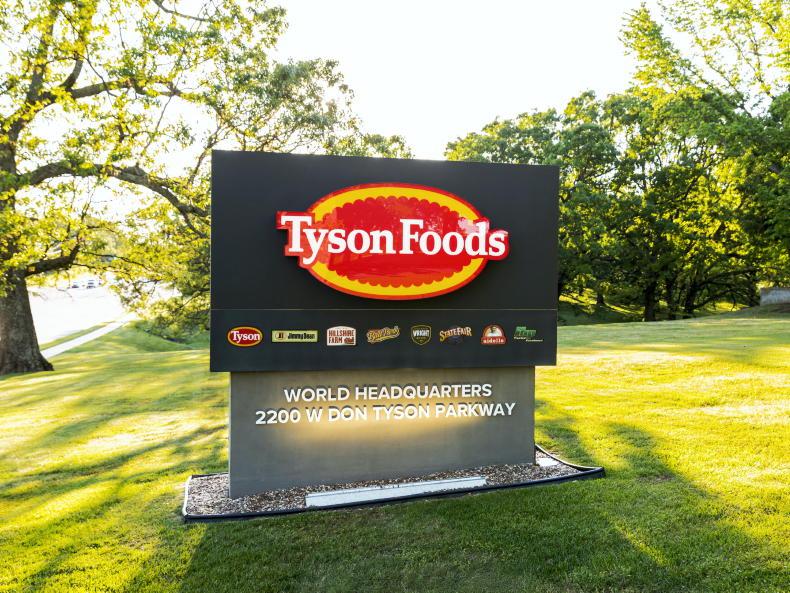Last year, Irish food and drink exports to China continued to be impacted by the Covid-19 pandemic, as China maintained its zero Covid-19 policy.
Total food and drink exports to China fell by 10% to just under €684m last year. The lifting of restrictions across China in January has brought renewed enthusiasm to do business and an improved economic outlook.
Meanwhile, the restoration of Irish beef access and a growing demand for dairy ingredients point to a return to growth for Irish exports to China in 2023.
Irish beef returns
The resumption of Irish beef trade with China was a very exciting and positive start to the year.
The Chinese beef market has changed quite significantly in the past three years, since 6,000t of Irish beef were exported in the five months of 2020 before the suspension.
It is difficult to forecast when we would reach those strong 2020 levels but, in the immediate term, Bord Bia sees opportunities for several forequarter cuts into Chinese food service and retail.
One of the key benefits of the Chinese market is that it provides an alternative market for a range of beef cuts, reducing our dependence on the UK and EU markets. Irish exporters can then choose the highest-yielding markets for individual cuts, providing a higher overall carcase price.
Food service remains the primary channel for beef consumption in China, with frozen beef making up an estimated 60% of the total consumption.
As the economy rebounds and Chinese consumers return to eating out, this will give a boost to the food service channel, imported beef prices and, subsequently, Irish beef exports.
As has happened in other markets, there has also been an active shift of consumption from food service to retail channels, especially e-commerce, as consumers became more accustomed to home cooking during the Covid-19 disruption.
Modern retail is emerging fast for beef with just 15% of beef purchased in retail channels from the traditional wet markets and the rest from supermarkets, specialised meat shops and close to 20% via e-commerce.
This rise of e-commerce and specialised stores is part of the changing consumption patterns in China’s expanding middle class, which puts a premium on health and taste. These trends present a clear opportunity for premium, grass-fed Irish beef.
Bord Bia is currently finalising research in China, to gain an up-to-date understanding of the Chinese beef market, which will assist Irish beef exporters to re-enter the market.
The study will pay particular attention to consumption behaviours and the food service channel, looking at preferred beef cuts and the types of outlets driving demand, eg steakhouses, hotpot restaurants or barbecue restaurants.
Market access
Currently, Ireland has access to export frozen boneless beef, from animals under 30 months to China. Beef must only come from animals born, raised and slaughtered in Ireland.
Twenty-one Irish meat plants are approved and registered by the Chinese authorities to supply Irish beef.
The Department of Agriculture continues to work closely with its Chinese counterparts in developing market direct access for Irish sheepmeat.
Bord Bia has a suite of in market activities planned in China once we have product available.
Growing opportunities in dairy
In 2022, Chinese milk production rose by 8.6%. This year, despite record low margins on Chinese dairy farms, Chinese milk supply is predicted to grow by a further 4.5%. Despite this surge in supply and a commitment to reach 70% self-sufficiency in dairy, China remains the world’s largest importer of dairy.
Infant food accounted for over half (€286m) the value of Irish dairy exports to China last year. Falling birth rates, coupled with China’s increasing domestic dairy production, has dampened import requirement for infant formula.
In Ireland’s case, the value of Irish infant food exports (exported as finished product) to China reached a high of over €600m in 2017, but has been declining since.
However, Bord Bia and Irish exporters have been preparing for this shift in demand by diversifying into growth opportunities in food service, retail and specialised nutrition. Irish dairy processors have also been forming partnerships with local Chinese manufacturers, by supplying them with base ingredients for their own infant formula brands.
In food service, bakery chains and tea shops are important outlets for Irish cream, with exports valued at €38m last year.
With the reopening of food service, we can expect this figure to gradually increase throughout 2023.
The WHO predicts that, by 2040, 28% of people in China will be over 60, presenting significant opportunities to meet the nutritional needs of an aging population.
Specialist adult nutrition dairy powders are considered an important component of a healthy diet for aging adults, and the market has been growing steadily since 2014.
In 2019, Bord Bia conducted research into the adult nutrition category to better understand the opportunities for Irish dairy exporters.
Fonterra and Nestlé were the first imported brands on the market with adult nutrition powders, and last year Dairygold launched the first Irish adult nutrition brand in China called Aerabo.
More recently, Bord Bia, in consultation with Irish dairy processors, has undertaken a comprehensive study into specialised nutrition in China. The study, which will be completed this month, will examine consumer purchasing decisions and what products are in demand, both now and into the future.
Grass Fed Standard
At the end of 2021, Bord Bia launched the Bord Bia Grass Fed Standard for Irish dairy at an event with the Chinese Dairy Industry Association in Beijing.
The standard has become a very useful tool in communicating Ireland’s grass-based production system, and its associated benefits of naturalness and quality, to Chinese buyers.
The reassurances provided by a verified national standard is a unique selling point versus our international competitors in China.
Irish pigmeat
In 2022, Irish pigmeat exports to China returned to pre- African swine fever (ASF) levels after incredibly strong performances in 2020 and 2021.
ASF decimated Chinese pigmeat production in 2018, leading to massive demand and opportunity for imported pigmeat.
Irish pigmeat exports to China reached an unprecedented high of €200m in 2020.
In the past two years, domestic production has gradually picked up and prices have returned to more normal levels.
While price and demand have fluctuated, Chinese consumption remains quite high. Irish pigmeat exports to China were valued at nearly €125m last year, down 35% on 2021.
The EU as a whole saw pork exports more than halve.
The Chinese market will always present an opportunity for offal and meat cuts less used in western cuisine, but one of Bord Bia’s goals is establishing an added value proposition in China too. This year will mark the end of the three-year EU pork and poultry campaign in China and Mexico.
In this time, Bord Bia has built a strong network of contacts and significantly improved awareness and understanding of Irish pigmeat in the Chinese market.
Bord Bia will look to build on this momentum for Irish pigmeat in China.
Chinese visits to Ireland
Bord Bia is running two separate EU co-funded campaigns to promote and develop the Chinese market for Irish pork and poultry, and Irish beef and lamb.
The Bord Bia-led EU beef and lamb campaign will invest over €1m in promotional activities in the Chinese market alone over the coming three years. The remainder of the €4.8m campaign budget is focused on the US, Japan and South Korea. Activities include trade shows and seminars to inform buyers about Ireland’s credentials as a beef and lamb supplier, chef masterclasses to target the food service market, and PR and advertising.
The EU pork and poultry campaign is currently hosting eight Chinese government representatives (17 to 28 April) for a two-week itinerary in Ireland. The officials are visiting Irish farms and processors, to get a first-hand experience of Irish meat production.
From 9 to 15 July, Bord Bia welcomes five Chinese buyers to Ireland for a tour of Irish beef and sheep farms and meat processors, as part of the EU beef and lamb campaign.
Trade mission
In May, Minister for Agriculture Charlie McConalogue, in conjunction with Bord Bia, will lead the first in-person agri-food trade mission to China since 2019. The trade mission will include attendance at SIAL trade fair in Shanghai, where nine Irish meat and five dairy companies will be exhibiting across three stands.
The trade mission will provide opportunities for Irish exporters to reengage with existing customers, connect with potential new customers, and get a sense of how the Chinese market has changed over the last few years. The trip comes after Minister Martin Heydon’s agri-food visit to China earlier this month, where he met with Chinese buyers and their Irish suppliers, and was a keynote speaker at the Hainan Expo trade show.










SHARING OPTIONS